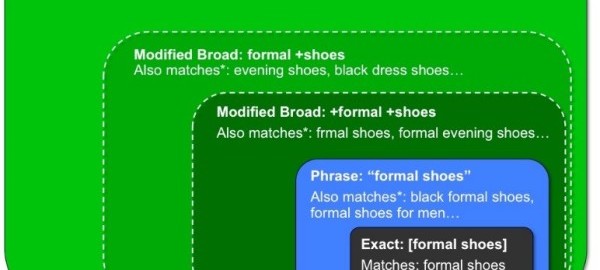PPC advertising is really only another form of statistics.
Every time you make a change, you have to monitor performance, and its effectiveness over time. You use key metrics to determine areas that need improvement and areas that are performing well. You use pivot tables and other tactics to further analyze groups of data, which requires a lot of work.
When starting a PPC campaign through Google AdWords, you’re given the option of creating one of five campaigns; a search network campaign, a display network campaign, a shopping campaign, a video campaign, or a universal app campaign. Each campaign has its own benefits.
In a search campaign, you’re able to attract people that are searching for your specific products or services. This type of campaign offers the greatest advantage for companies that are trying to increase their return on investment because you can appeal to people that want exactly what you offer.
If you’re looking to improve your ROI in Google AdWords, these 6 tips can give your AdWords’ Search Campaigns a nice boost.
- Use Review Extensions
If you have plenty of positive feedback from a review site, create a review extension for your campaign. There aren’t many things that will have a greater influence on a customer’s buying decision than the opinions of other customers.
Not only does this make ads (which people are sometimes skeptical of) more trustable, but it can significantly improve your CTR due to the additional line of text.
- Create Relevant Ads and Landing Pages
Google wants you to use your keyword in both your ad and feature it on your landing page. This way, Google knows if your ad and website are relevant to what people are searching for.
But it doesn’t make any sense to change the copy on your existing pages, which is why you should be using landing page tools like Unbounce and Wishpond.
On top of making it easier to secure a higher quality score, creating awesome landing pages will make conversions easy. According to Search Engine Land, the average conversion rate is 2.35%.
- Use Different Match Types
Testing and using different match types helps improve your ad’s CTR. Having exact and phrase match keywords allows you to rank ahead of competitors that are using broad match keywords, ultimately giving them preference.
If you’re starting a new account, you may even want to experiment with separating match types by ad group. By using ad group negative keywords, you can ensure that the correct match type is being triggered. The benefit of this is that the proper keyword match type will be used depending on the search. This will give you better insight into the types of searches that are generating impressions.
- Use Ad Scheduling
Ad scheduling can be useful for a number of different scenarios. Here are a couple reasons to use ad scheduling:
- Showing Ads During Business Hours
White Shark Media suggests showing ads only during your hours of operation. For companies that generate a lot of new business from phone calls, it doesn’t make sense to target customers when you’re not open.
- When Your Budget is Being Exhausted Too Quickly
While I’d usually suggest other solutions, using ad scheduling can be useful in certain scenarios. It’s particularly useful when you’re working with high search volume keywords and the clicks you’re receiving early in the morning aren’t converting.
- Implement Negative Keywords
What are negative keywords? Negative keywords are keywords in your PPC account that you create to prevent irrelevant searches from appearing.
By not building an effective negative keyword list and not monitoring your search query report regularly, you can end up costing your company a lot of money from clicks that won’t convert.
To start building an effective negative keyword list, use a list from KoMarketing. It’s tailored to B2B companies, but most businesses will find that most of the keywords can be added as negative keywords.
- Test Everything!
a. A/B Test Your Landing Pages
Assuming you’ve followed the best practices for creating landing pages, use A/B testing to improve your conversion rate.
A/B tests are actually quite simple. All it is is comparing two versions of a web page and tracking the performance of each version over time.
Chris Lucas highlighted some of the most effective landing page a/b tests to start using. A summary of them is provided below, along with some other popular A/B tests:
- Landing Page Headline
- Photos and Video
- CTA Button
- Color
- Font Size
- Typeface
Using these A/B tests, you can figure out (with data to support you) which landing page will perform the best.
b. Test Ad Copy
You can use A/B testing or multivariate testing for figuring out the best performing ad copy for your ads. Elements that you should try testing include your ad’s headline, ad copy, and display URL.
c. Test Match Types
Compare how your different match types are doing. By analyzing the performance of different match types for the same keyword, you’re able to see how they compare in terms of clicks, impressions, CPC, and which match types are generating the most conversions.
d. Test Keyword Performance
If you have keywords that haven’t generating conversions, but have continually generated clicks, it might be time to pause that keyword. There’s no sense in paying money for a keyword if it’s not going to convert.
Your Thoughts…?
Do you have a strategy that you’ve found effective in increasing ROI? Share it in the comments. I’d love to get your feedback on how my tips have helped you increase your ROI and better yet more ways to improve ROI within search campaigns.
Digital & Social Articles on Business 2 Community(63)
Report Post





